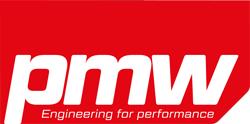While the WRC is still haggling over the details of its 2022 hybrid regulations, former Hyundai works driver Kiwi Hayden Paddon has provided the world with a high-performance electric rallycar, the Hyundai Kona EV.
While there are other electric rally machines in development, such as the Corsa-e, this is the first, factory-supported (though by no means works, it is Hyundai New Zealand backed) machine with performance on a par with the WRC.
Built by Paddon Rallysport Group with input from Austrian Manfred Stohl’s Stohl Advanced Research and Development (STARD), which supplied the powertrains for the Projekt E electric Rallycross pilot, it is based around a Kona shell, similar to that which Hyundai hopes to campaign in the WRC from 2022.
The STARD-supplied battery, inverter and motor is capable of a maximum output of around 900bhp, but in rally trim, where it is hoped the car will complete full distance stage rallies, power will be around 400-500bhp. Given the car’s weight of approximately 1,400kg, this should put performance in the ballpark of modern WRC (which has slightly less power but weighs 1,190kg).
The Kona also has the option to run either two, three or four motors, and the battery pack will be updated as prototype testing continues to a larger capacity unit. Paddon’s hope is to have the car competing in New Zealand-based events over the course of the next 12 months.
Hyundai Kona EV Rallycar specs
| Motors | Bruiser BLDC Motor |
| Potential configuration 2, 3 or 4 motors | |
| Each motor peak power 220kw | |
| Up to 1,100Nm torque | |
| Customized cooling system | |
| Customized front/rear torque vectoring | |
| Tires | Pirelli range |
| 15in gravel, 18in tarmac | |
| EVO Corse lightweight alloy wheels | |
| Cockpit | Racetech seats, belts, steering wheel |
| MoTec M1 management system | |
| MoTec PDU and driver displays | |
| MoTec keypad | |
| Chassis / Suspension | Front/rear EXT MacPherson struts with five-way adjustable dampers (new technology) |
| Steering electric power-assisted rack and pinion | |
| Braking system ventilated Brembo disc brakes (355mm on tarmac; 300mm on gravel), air-cooled four-piston calipers | |
| Handbrake hydraulic control | |
| Transmission | Twin transmission |
| Paddle shift gear selection – MoTec controlled | |
| Driver-controlled torque settings | |
| Chassis / Bodywork | Steel bodyshell with welded multi-point chromoly roll cage. Extensive chassis strengthening |
| Bodywork Steel and composite fiber panels | |
| UC designed Aero package for a combination of downforce and reduced drag | |
| Weight | Expected weight approx 1,500kg (with battery) |


